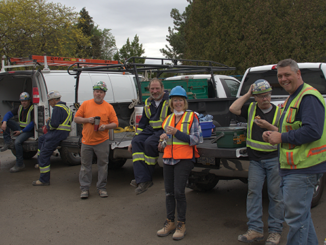
By / Jordan Whitehouse
No economy in the world is emerging unscathed from the coronavirus and neither is any province or territory in Canada. Still, while the economic impacts of the pandemic on 2021 remain largely unknown, some industry experts believe that the construction industry in general could fair okay.
For that to happen, however, a few things will need to occur, say those same experts. For one, provinces will have to take better advantage of the federal government’s Investing in Canada Plan, which has earmarked $180 billion in infrastructure spending over 12 years. Some provinces have invested less than 50% of those funds so far. “That’s a lot of money that is available from the federal government that has not been accessed,” says Mary Van Buren, president of the Canadian Construction Association. “If those funds aren’t tendered, then how long is it until shovels get in the ground?”
Another key part of the construction industry’s recovery will come down to the economic stimulus packages provided by government, says Van Buren. Investor confidence will be yet one more important piece of the rebound, says Richard Forbes, a senior economist at the Conference Board of Canada. “The business investment landscape in Canada has been weak for quite some time, even before the pandemic, and now it’s even more uncertain,” he says. “So, I think keeping an eye on how investment recovers is going to be key to seeing how the construction industry recovers as, well.”
Investor confidence in industrial projects, in particular, will be crucial to that sector’s recovery, says Forbes. However, one silver lining in industrial construction so far, he notes, has been the demand for warehouse space. Online shopping was accelerating warehouse construction before the pandemic, and now it has accelerated it even faster as e-commerce continues to take off.
On the commercial side of construction, prospects look quite bleak, as employees continue to work from home and businesses try to get rid of space amid the economic fallout from the pandemic. In downtown Toronto and Vancouver, office vacancy rates that were below 2% before the pandemic are now over 4%. In Ottawa and Montreal, downtown offices are over 8% vacant, while in Calgary almost 30% of offices sit empty.
The pandemic is also having a significant impact on the multi-unit residential construction sector. While construction activity remains brisk in the country’s biggest cities right now, resale numbers are showing that small and high-density central city apartment are falling out of favour.
“On the flipside, lower-density multiples in secondary cities, such as in the Toronto context like Kitchener, Barrie, and Peterborough, are proving more popular, so you have to expect that those will outperform those high-density units in urban cores,” says Robin Wiebe, a senior economist at the Conference Board of Canada.
No matter the construction sector, however, labour shortages continue to be a major concern across the industry. That refers mainly to skilled tradespeople, but includes virtually all roles in the industry, from engineers to project managers and from estimators to truck drivers. This was a significant issue before the pandemic, and it’s been exacerbated by closed borders, says Van Buren.
“New Canadians were traditionally a pretty reliable source of new recruits into the industry, but in 2020 we’ve had virtually no immigration, and we were trending around 400,000 people a year coming to Canada,” she says. “So, if you put that on hold, it will make the war for talent even more fierce.”
In some smaller markets, the federal government’s Canada Emergency Response Benefit program also worsened that war, because it was a disincentive for people to work, says Van Buren. However, government programs like the Canada Emergency Wage Subsidy have certainly helped companies retain workers for when they’ve needed them most, says Forbes.
One piece of good news has been the continued strong commitment to prompt payment from the federal government and the provinces, says Van Buren, which will remain critical as we move through the economic uncertainty of the pandemic. She does note, however, that the federal government needs to help out with reimbursing costs associated with the pandemic, such as those for personal protective equipment.
“The industry ate most of those costs, so we’re asking that the federal government take a leadership position on that so that others see that it’s the right thing to do, whether it’s private owners or others levels of government,” Van Buren says.
Two other positives to come out of the pandemic have been increased hygiene standards and increased confidence in using technology, says Van Buren. “COVID-19 has necessitated a hyper-focus on hygiene, of course, but the industry’s quick adoption of new and often changing protocols, as well as its collaboration on this issue, has helped build a lot of trust in the workforce,” she says.
As for technology, the industry’s office workers have adopted tools like Zoom and other collaboration tools quite quickly, and that has led to increased productivity in some cases.
So, while the overall uncertainty of the pandemic and the economic climate in Canada will certainly lead to more nail-biting across the country’s construction industry, there are reasons for hope.
“We believe that construction is the right place to lead the economy and the economic recovery, and that infrastructure is an investment that is worthwhile,” says Van Buren. “So, we’ll continue to press forward. We’re optimistic about 2021.” ▪



